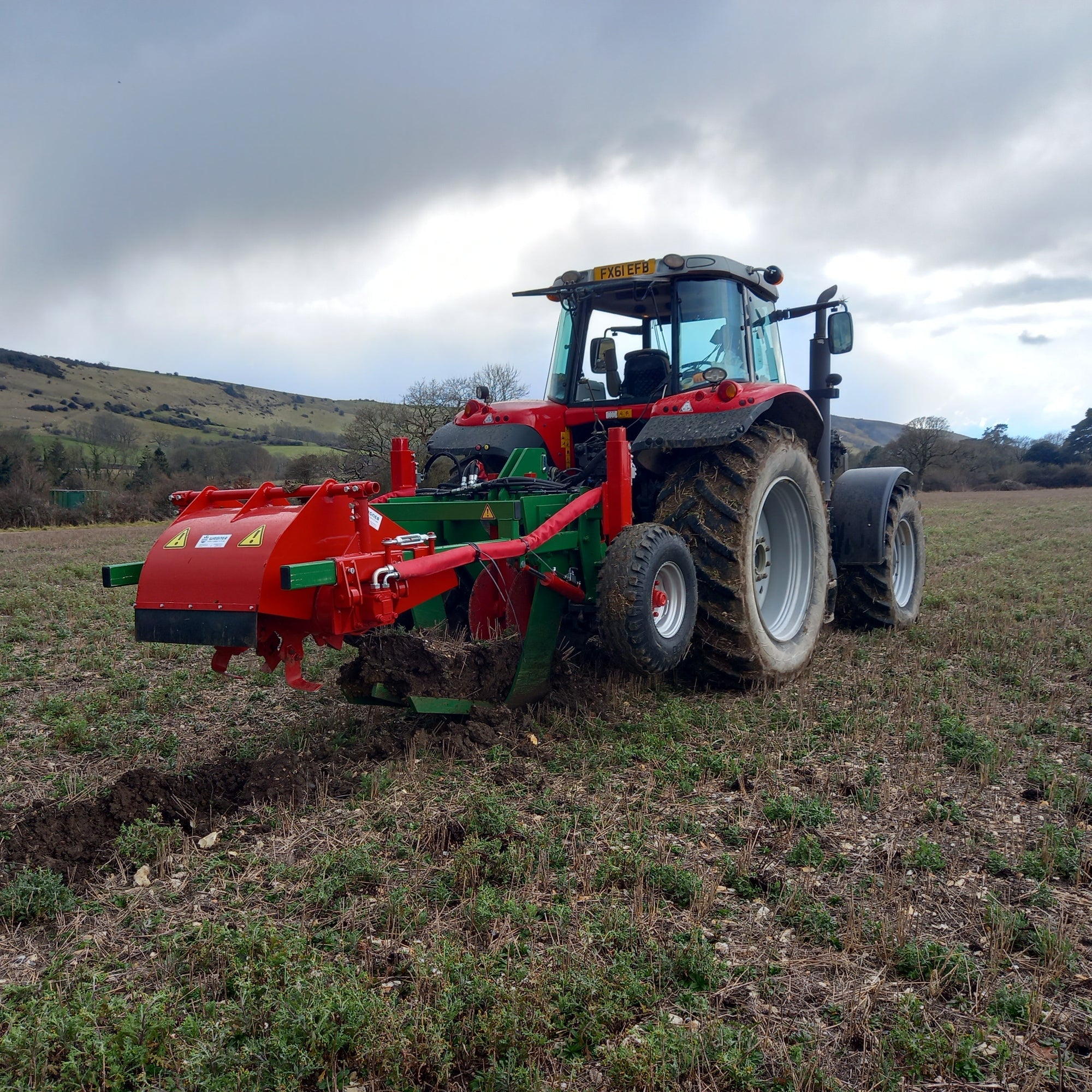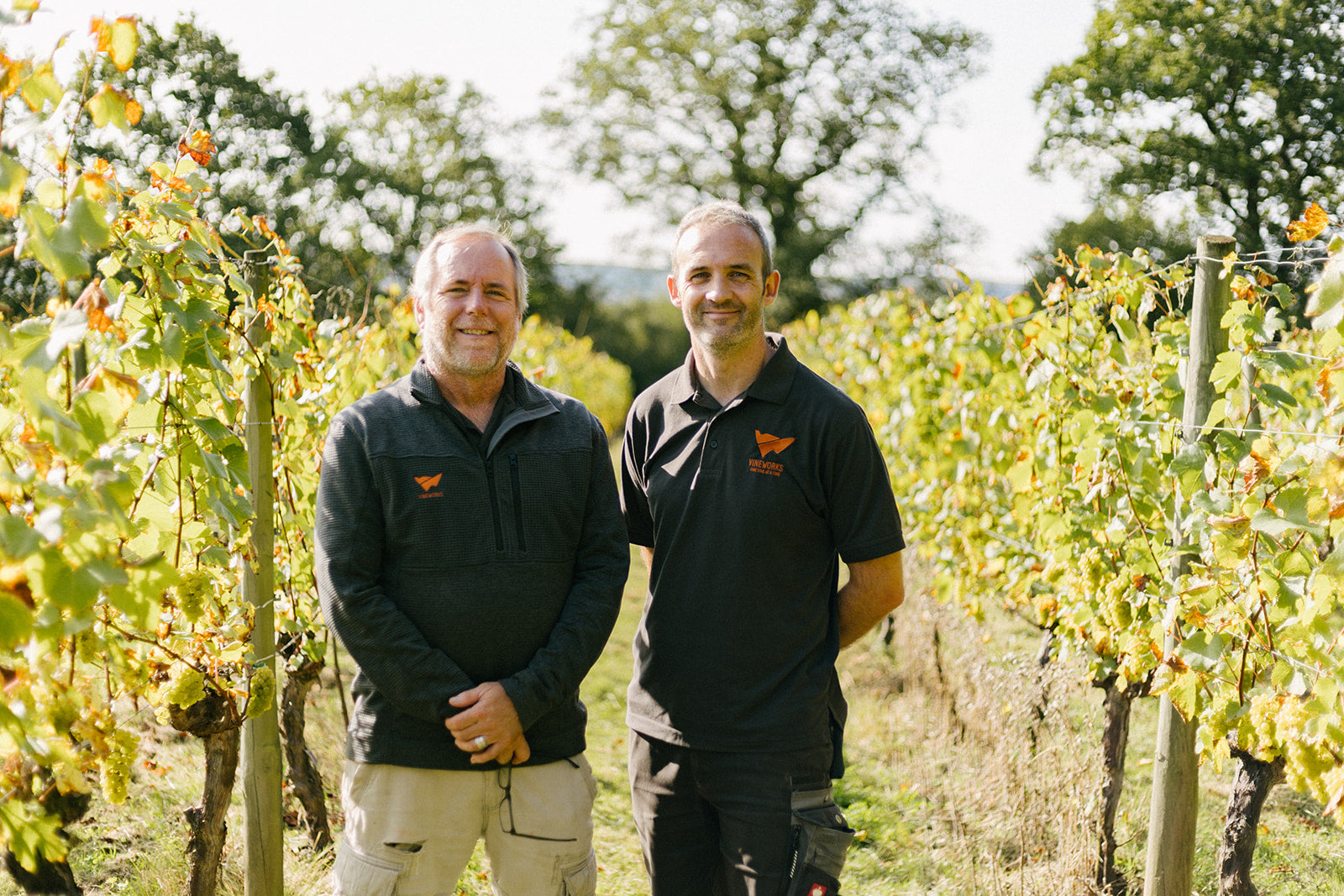

Canopy Management: Practical Advice for a Productive Vineyard
Successful canopy management is the cornerstone of healthy, productive vines. In the UK, where our growing season presents unique challenges and opportunities, careful attention to your vine’s canopy throughout the summer is essential. Think of the foliage as your vine’s ‘factory’ - working hard to photosynthesise, support fruit development, and protect against disease. The aim is to keep this factory running efficiently with a uniform, balanced canopy.
Bud-Rubbing
As the growing season begins, remove any unwanted shoots from the trunk - a process known as bud-rubbing. This is best done by hand to ensure thoroughness. However, mechanical and chemical options are available and can result in significant cost and time savings.
Shoot Selection and Thinning (Summer Pruning)
Once the danger of spring frost has passed - typically by late May - start thinning shoots to create space for each shoot and bunch of grapes, allowing for maximum light and airflow. Prioritise shoot positioning over strength, as strong shoots do not necessarily yield more fruit. Remove overcrowded, weak, or non-fruitful shoots. In frost-affected sites, secondary shoots may be retained, though they tend to yield less. Early thinning is especially valuable in vigorous sites to prevent canopy overcrowding and promote uniform ripening. Good shoot selection balances vine growth, reduces risk of disease by opening up the canopy and sets up the vine for winter pruning.
Tucking In and Wire Lifting
Tucking in is a simple but vital task: gather the upright shoots between the foliage wires to form a tidy hedge. This keeps the canopy organised, promotes airflow, and ensures the fruiting zone remains exposed. Raise your first wire just above the 4th or 5th bud - the typical fruiting zone - and continue lifting and tucking as the shoots grow.
Wire lifting should take place when around 80% of shoots have reached the desired height. A good practice is to keep the lower two wire pairs dropped to the lowest tag and the third raised to the top. This setup allows for a more efficient single pass during lifting.
The Role of Foliage Clips
Once your wires are lifted, use foliage clips to keep everything secure. These ‘C’-shaped clips prevent shoots from flopping out and snagging on machinery, ensuring a neat canopy and uniform fruit exposure. Clips are especially helpful in younger vines where shoot numbers are limited, and wire slack is greater.
Use at least one clip per vine, spacing them centrally in each bay. Avoid placing clips too close to end posts. Too many clips can compact the canopy, reducing airflow and increasing the risk of disease. Biodegradable fibre clips are ideal for UK vineyards, as they break down naturally and save time during winter pruning.
Trimming: Tipping vs. Topping
When it comes to trimming, timing and severity matter. You have two main options: ‘tipping’, which removes only the shoot tips to encourage further growth, or ‘topping’, which removes 30-50 cm to reduce excess vigour. Each has its place, and you may use a combination depending on the block.
Each grape bunch needs at least 10 mature leaves to ripen fully, so don’t default to trimming at the post height. Overshadowing from excessively tall canopies can affect neighbouring rows, so ensure your trellising is designed with row spacing and canopy height in mind.
Leaf Stripping for Health and Ripening
Though it may seem counterintuitive, removing some leaves from the fruit zone improves conditions for ripening. Older leaves become less productive and block sunlight, while also increasing humidity and disease pressure. Stripping leaves - starting on the east side where the morning sun dries the dew - improves spray penetration, reduces disease risk, and accelerates ripening.
While machines are available for this task, experienced workers often achieve better results by making considered decisions vine-by-vine.
In Summary
Effective canopy management is a continuous, hands-on process throughout the summer. From shoot selection and tucking in, to trimming and leaf stripping, each step supports your vine’s productivity and health. The goal is a uniform canopy that maximises photosynthesis, improves airflow, and ensures even ripening. With good timing, the right tools, and skilled hands, your vine’s ‘factory’ can deliver top-quality fruit come harvest - one vine at a time.



